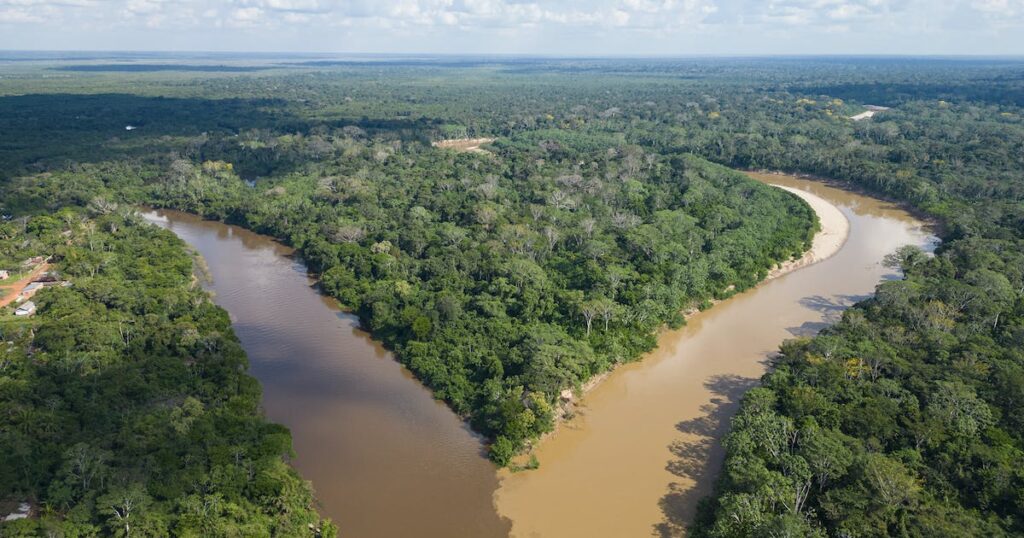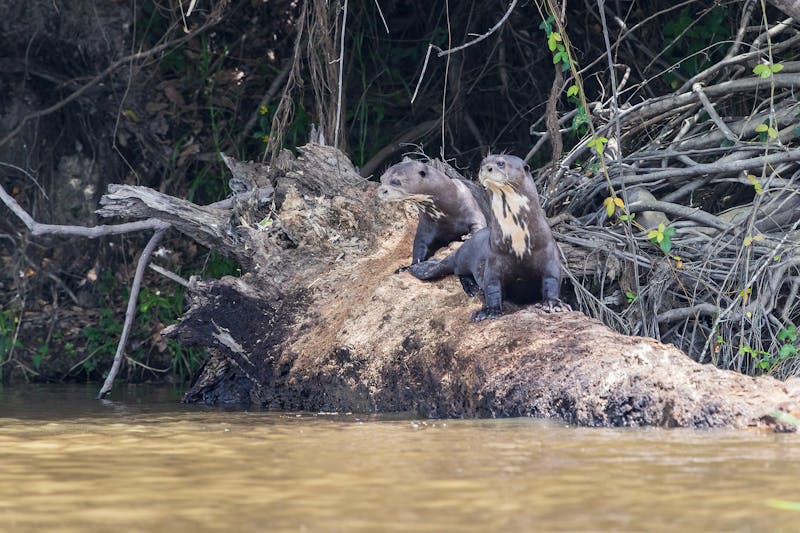In Bolivia, a ‘conservation mosaic’ gets another (big) piece
4 min read
In the remote lowland forests of northwestern Bolivia, a small municipality has taken a big step to protect one of the Amazon’s most biodiverse regions.
With support from Conservation International, the municipality of Sena established a law to protect 452,639 hectares (1.1 million acres) of Amazon rainforest. The Gran Manupare Integrated Management Natural Area is the most recent piece in a massive, interconnected “conservation mosaic” created largely by local municipalities and Indigenous communities that are taking forest protection into their own hands.
In the past 25 years, Bolivian towns like Sena have protected 10 million contiguous hectares (25 million acres) of Bolivia’s Amazon — an area nearly the size of Iceland — securing their livelihoods, as well as endangered wildlife, and helping the country reach its ambitious goal to protect 30 percent of its land years ahead of schedule.
“Piece by piece, we are knitting together the fabric of conservation in the Amazon,” said Conservation International-Bolivia Vice President Eduardo Forno. “This is a huge achievement, a testament to the power of a consistent approach. Local communities have kept their eyes on the prize. They are having a big impact on the Amazon — for the benefit of us all.”
Local and Indigenous communities
led the effort to establish the Gran Manupare protected area. © Rene Herbas
The approach, spearheaded by Conservation International, was born out of necessity, Forno said. Bolivia’s last national protected areas were created in the early 2000s, and historically the country has had one of the highest per capita deforestation rates in the world.
But in Pando, the department where Gran Manupare is located, the story is different. There, more than 90 percent of the land is covered by forest, compared with 44 percent nationally, Forno said.
That’s thanks in large part to a nut.
“It’s all about the Brazil nut,” said Juliana Ewert, a program manager at Conservation International-Bolivia who worked with the community to establish the protected area. “Pando’s forest is still standing because of it.” Despite what the name suggests, Brazil nuts mostly come from Bolivia where they are a major source of income for local communities, Ewert says.
Up to 70 percent of the forest in Pando Department is made up of sustainably managed Brazil nut trees. But mining and encroachment by settlers who practice slash and burn agriculture are an ever-present threat. In response, Conservation International approached the Sena municipality about establishing a protected area that locals can continue to manage sustainably, thereby ensuring their livelihoods.
“Protected areas act as a shield against these threats, allowing the Indigenous communities and municipalities to preserve their main source of income,” Forno said.
Over time, municipalities, Indigenous communities, conservation organizations and other partners have managed to build a “conservation mosaic” that connects millions of hectares of neighboring protected areas.
“By connecting these protected areas, our impact can be much greater,” Ewert said. “It creates a network of communities who can share knowledge and forge partnerships. For example, how one community chooses to manage their forests can have dramatic impacts on another’s water supply — it can even impact rainfall in cities miles away.”
It also establishes interconnected corridors for wildlife to travel freely. Gran Manupare is home to a vast array of species, including the endangered giant otter (Pteronura brasiliensis), which can grow up to six feet long. In the 1950s and ‘60s, giant otters were poached to near extinction for their water-repellent pelts. Today, these “river wolves,” as they are known in South America, are threatened by habitat loss in the Amazon, Orinoco and La Plata river systems due to climate change, as well as roads and dams. The new protected area in Bolivia could provide this species with a bulwark against extinction.
 Giant otters were hunted
Giant otters were hunted
to near extinction for their water-repellant pelts. © Gabriela Villanueva
Gran Manupare’s benefits extend far beyond the region — protected areas have enormous potential to stave off the worst consequences of climate change. A recent study co-developed with Conservation International scientists found that forests that are in protected areas keep an additional 10 billion metric tons of carbon out of the atmosphere. That’s the equivalent of one year’s worth of global fossil fuel emissions.
Gran Manupare may be the newest addition to the effort, but it’s far from the last, Forno said. Conservation International has plans to work with three additional municipalities in the Pando Department. By 2030, Forno expects to help
communities protect an additional 4 million hectares (10 million acres).
“The collaboration among the communities, environmental organizations and governments is encouraging,” Forno said. “We must continue to be strategic and work together — we cannot fly solo.”
This initiative was supported by the French Ministry for the Economy and Finance and the French Fund for the Global Environment as part of the ‘Our Future Forests – Vital Reserves’ project. The Embassy of Sweden, the Bezos Earth Fund and the Andes Amazon Fund also provided support.
Mary Kate McCoy is a staff writer at Conservation International. Want to read more stories like this? Sign up for email updates. Also, please consider supporting our critical work.





